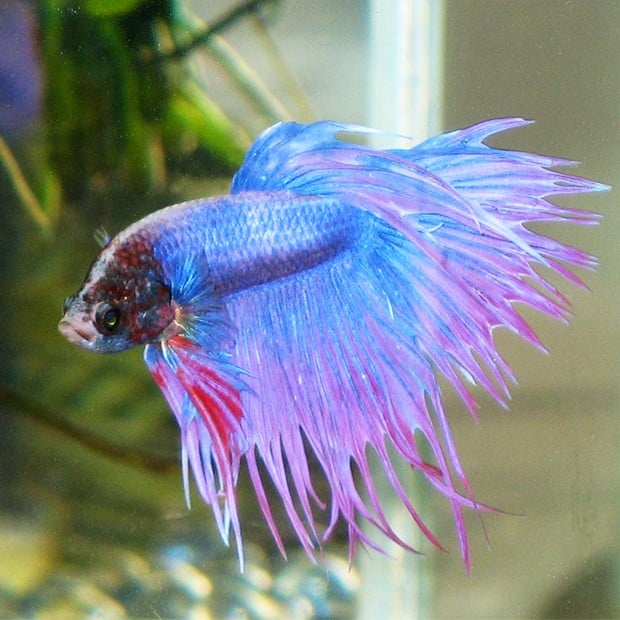Just How to Present Betta Fish to an Area Storage Tank Safely
Just How to Present Betta Fish to an Area Storage Tank Safely
Blog Article
How to Breed Betta Fish Efficiently: Specialist Methods and Insights for Hobbyists Seeking To Broaden Their Betta Collection
Breeding Betta fish calls for a nuanced understanding of genetics and ecological problems, making it vital for hobbyists to come close to the procedure with both persistance and treatment. Producing an optimal breeding atmosphere, selecting the best sets, and observing the ins and outs of their courtship habits are fundamental actions that can substantially influence the end result.
Understanding Betta Fish Genetics
Comprehending the genes of Betta fish is vital for effective breeding, as it affects attributes such as shade, fin shape, and actions. Betta fish display a diverse selection of shades and patterns, largely established by their genetic makeup. The main genetics responsible for pigmentation consist of the "B" gene for blue, "D" gene for red, and the "C" genetics for shade intensity. Dog breeders can control these qualities by selecting details parent fish that display wanted features.
In addition to pigmentation, fin morphology is an additional substantial facet of Betta genetics (betta fish). The shape and dimension of fins are affected by different genes, including those that establish whether the fins are short, long, or veil-shaped. Recognizing these genetic variations aids dog breeders forecast the phenotypic end results of their children
In addition, behavior qualities such as aggressiveness and territoriality can also be influenced by genetics. These habits play a crucial role in the reproducing procedure, as they can affect spawning success and the total personality of the resulting fry. By thoroughly understanding these hereditary concepts, dog breeders can make educated decisions, inevitably improving their breeding programs and attaining desirable outcomes.
Preparing the Reproduction Setting
Creating an optimal breeding setting is crucial for the effective reproduction of Betta fish. The first action in preparing this environment is to pick an ideal reproduction tank, ideally ranging from 5 to 10 gallons.
Following, think about using a sponge filter or an air rock to give mild water flow without creating solid currents that can emphasize the fish. It is necessary to install plants or reproducing cones to use concealing spots and promote convenience for the woman during the spawning procedure. Drifting plants, such as Java moss or water sprite, can also create an extra natural environment while helping with bubble nest building by the male.
Before introducing the reproducing pairs, guarantee the water is conditioned and without damaging chemicals, such as chlorine or hefty metals. betta fish. Normal water modifications must be carried out to maintain ideal water high quality, boosting the chances of effective reproduction. With these prep work in position, the reproducing atmosphere will certainly sustain the wellness and anonymous well-being of both Betta fish
Choosing Breeding Pairs
Picking the ideal reproduction pairs is essential for accomplishing successful Betta fish reproduction. Healthy Betta fish show vivid colors, clear eyes, and active habits.
Temperament is one more important consideration, as Betta fish are recognized for their aggressive nature. It is a good idea to choose a male and lady that exhibit compatible personalities to reduce stress during the breeding procedure. A calm male can encourage a smoother courtship, while a woman that is as well aggressive may interfere with the procedure.
Genetic background likewise plays a considerable role in the high quality of the spawn. Breeding fish that are genetically diverse can lower the danger of genetic health concerns and enhance the overall vigor of the fry. It is beneficial to look into the lineage of both the man and female, concentrating on preferable traits such as fin kind, shade patterns, and size.
The Breeding Refine
The breeding process of Betta fish needs mindful planning and interest to information to ensure a successful end result. It is important to prepare read here an appropriate reproduction container, ideally a 5-10 gallon aquarium with a temperature preserved at 78-80 ° F. The container should be geared up with a heating unit, filter (ideally sponge kind to stay clear of strong currents), and lots of water plants for the woman to conceal.
As soon as the setting is set, introduce the selected breeding pair to the storage tank, permitting them to acclimate. Observe their habits; the man will certainly display fancy courtship rituals, including flaring his fins and developing a bubble nest. If the woman reveals passion, she will certainly present upright red stripes suggesting preparedness for spawning.
When the woman is receptive, the pair will take part in a breeding welcome, throughout which the male feeds the eggs. It is vital to check their communications very closely, as the man might end up being aggressive. After spawning, remove the female to protect against possible injury. The man will have a tendency to the eggs, which usually hatch within 24-36 hours. Maintaining optimum water problems during this period is important for the development of healthy and balanced Betta fry.
Caring for Betta Fry

Feeding Betta fry is essential, as they need a diet regimen high in protein. They can be fed infusoria or fluid useful reference fry food, transitioning to finely crushed top notch pellets as they expand. Feed small portions several times a day to urge healthy development without overwhelming the tank with leftover food.

As they develop, monitor their growth very closely and divide any kind of aggressive individuals to stop harm. By offering a supporting environment and appropriate nutrition, enthusiasts can successfully elevate Betta fry into vivid, healthy fish, ultimately improving their breeding ventures.
Verdict
Effective Betta fish reproduction calls for meticulous attention to genetic choice, ecological problems, and treatment for the fry. By understanding the genetics of Betta fish and preparing a suitable reproduction atmosphere, enthusiasts can boost the opportunities of producing vibrant, healthy offspring.
Report this page